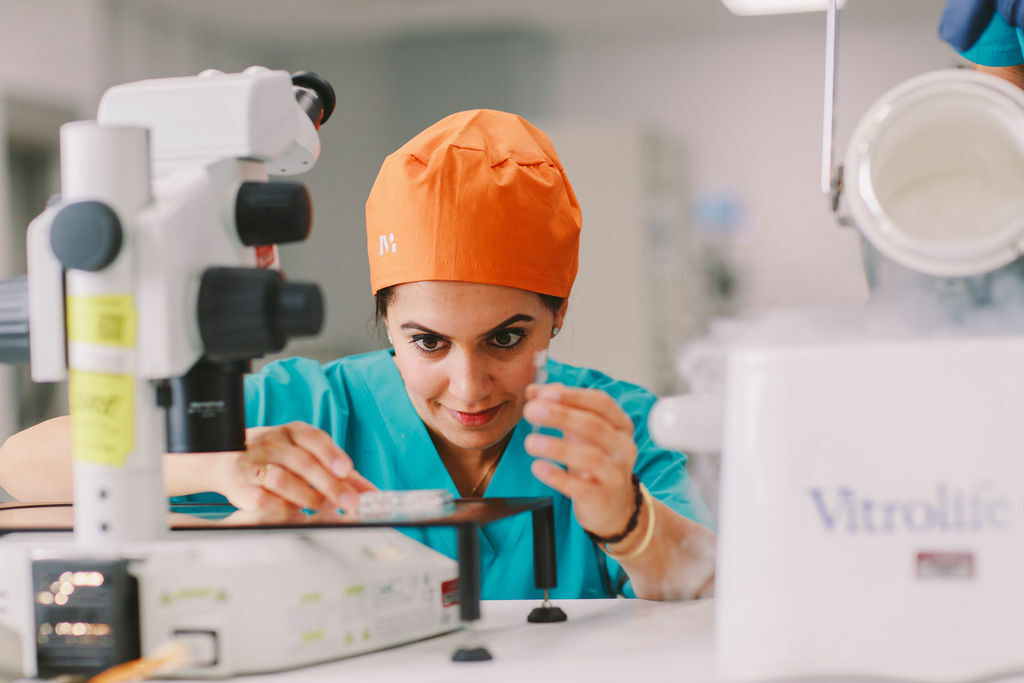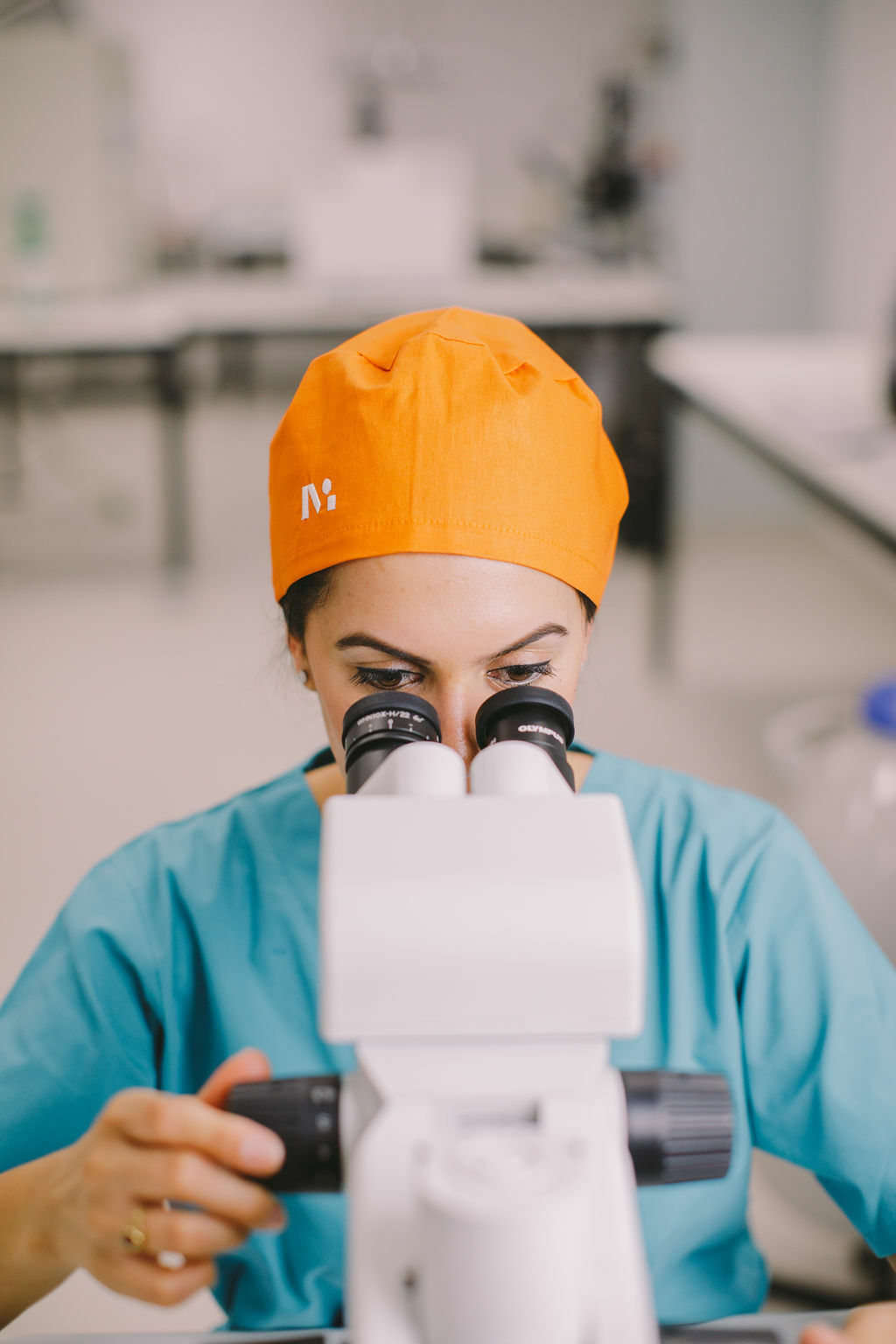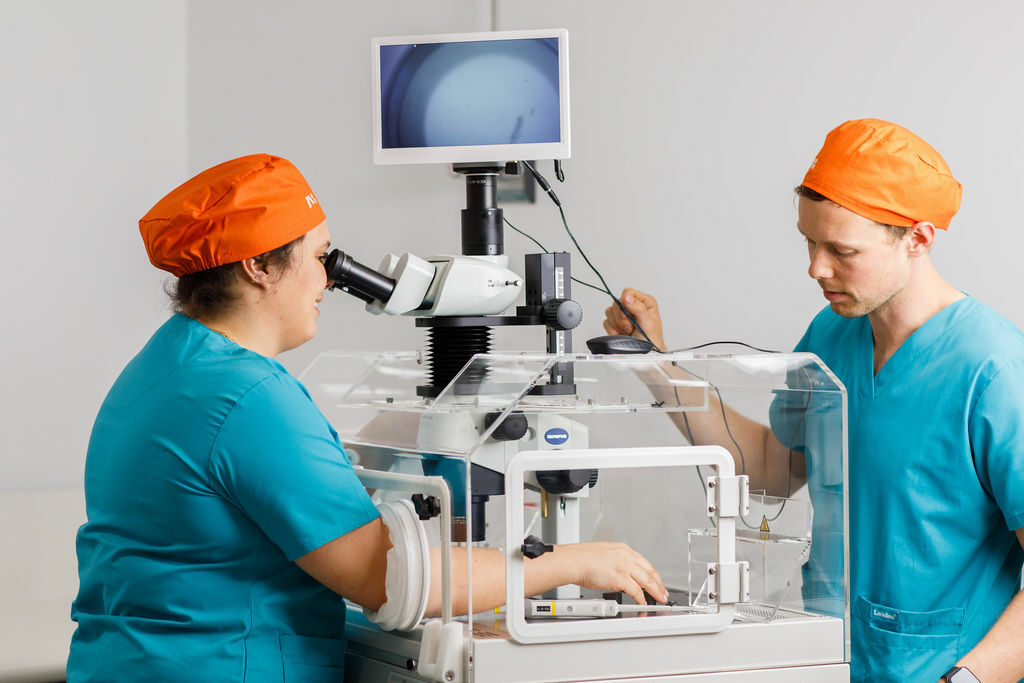ICSI - Intracytoplasmic Sperm Injection
Intracytoplasmic Sperm Injection (ICSI) is a technique where a single sperm is given a helping hand to ‘enter’ the egg. This method is especially successful in overcoming male infertility problems.
Keen to know more? Read on to discover more about the ICSI process, and whether or not it could be right for you.

For patients using ICSI, the treatment process is exactly the same as a standard IVF cycle. The only difference? The fertilisation technique the embryologists use in the lab on the day your eggs are collected.
How does ICSI work?
Since it only takes one single sperm to fertilise the egg, our highly experienced scientists known as Embryologists search and catch the ideal sperm and inject this single sperm directly into the centre of the egg.
Sound simple?
Actually, ICSI is one of the most technically challenging procedures for an embryologist.
At Monash IVF, we’re 100% committed to increasing your chances of having a family. So only our most experienced scientists are trained in ICSI.
Who can use ICSI?
Wondering whether ICSI is right for you?
ICSI can be an option for patients who have:
- an abnormally low sperm count or poor motility
- a high percentage of abnormal sperm or few healthy sperm
- sperm obtained via testicular biopsy or micro TESE
- previously low fertilisation rates with standard IVF
- undertaken Preimplantation Genetic Testing (PGT)
If you don’t fit one of the above categories, however, you’re probably better off using standard IVF rather than ICSI. There’s growing evidence to suggest that IVF success rates are actually higher when standard insemination techniques are used.
The takeaway? Think of ICSI as a viable Plan B.
Our embryologists will sometime spend hours searching for the perfect sperm for ICSI - especially in patients with a low sperm count or poor motility. We stop at nothing to find the perfect, most vigorous sperm.
Common questions
If you think ICSI might be right for you, it’s a good idea to talk through the process with your fertility specialist. They’ll tailor a treatment plan to your individual circumstances to give you the very best chance of success.
[1] “The Vienna Consensus: Report of an Expert Meeting on the Development of Art Laboratory Performance Indicators.” Reproductive BioMedicine Online, vol. 35, no. 5, 2017, pp. 494–510, https://doi.org/10.1016/j.rbmo.2017.06.015.

Start your fertility journey
Wherever you are on your journey, one of our supportive nurse enquiry team can help you understand your options and take the next step. These conversations are free and informative.



